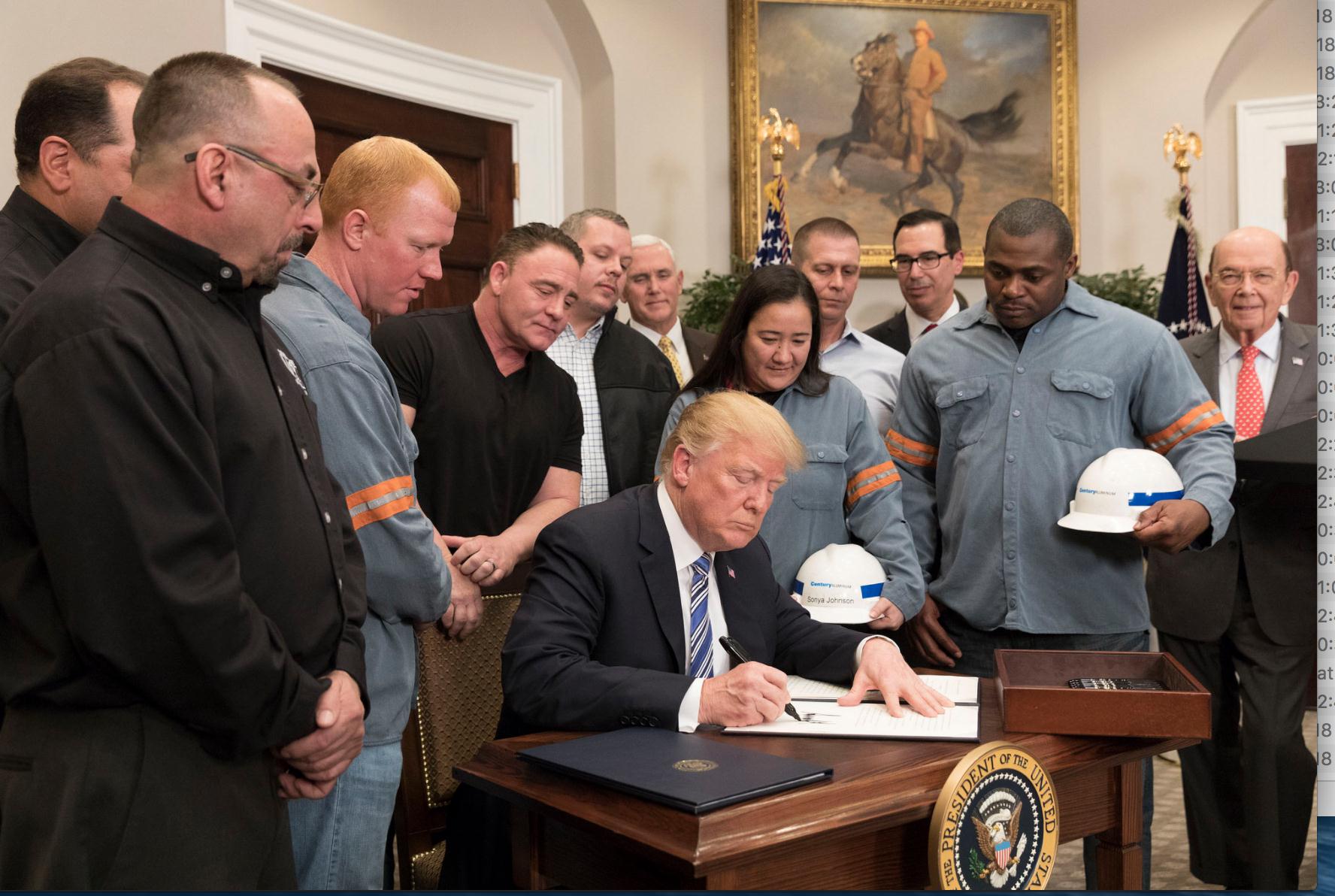President Donald J. Trump’s tariff announcement on steel and aluminium is having reverberations not only in the United States, but around the world.
While Trump is excluding Canada and Mexico for now due to North American Free Trade Agreement negotiations – and says they will come off only if a new and “fair” NAFTA agreement is signed – his administration is slapping a 25% tariff on steel and 10% tariff on aluminium being imported from elsewhere.
It’s hard to tell what impact this move will have on steamship lines. But the general belief is that it will have some.
Most steamship line executives are reluctant to discuss the topic, but when Wolfgang Freese, Region North America president at Hapag-Lloyd was asked he said: “It’s too early to predict the impact of the tariffs. There is some steel moving in containers, but it is no major volume overall. Therefore, we believe that the impact on us might be pretty marginal. However: retaliation will probably be the name of the game – and we do not know yet what this might translate to.”
The intent of the threatened tariffs is to force US manufacturers to buy American-made steel. “But that assumes the price of US-made steel stays the same,” says Dan Gardner, vice president of supply chain for Lakeshore Learning Materials in Carson, California, and co-founder of consulting firm Trade Facilitators, Inc. “There is no rule that states that US steel producers have to keep their prices the same. They can raise their price and still be below what it would cost to buy imported steel. They win even more. No matter what happens, the consumer pays, and ultimately it could become inflationary.”
While some in the Trump administration and many within his party disagree with the tariffs, Trump has said that the tariffs are necessary for national security reasons, based on findings in a recent report released by the US Department of Commerce (USDOC) that found that the quantities and circumstances of steel and aluminium imports “threaten to impair the national security.” USDOC figures point out that the US is the world’s largest importer of steel and that it imports nearly four times that which it exports.

“On an average month, China produces nearly as much steel as the US does in a year,” said USDOC Secretary Wilbur Ross. “For certain types of steel, such as that for electrical transformers, only one US producer remains.”
The study also found that world steel-making capacity is 2.4 billion metric tons, up 127% from 2000, while steel demand grew at a slower rate, and that the recent global excess capacity is 700 million tons, almost seven times the annual total of US steel consumption.
China is by far the largest producer and exporter of steel, and the largest source of excess steel capacity. “Their excess capacity alone exceeds the total US steel-making capacity,” the report states.
The European Union is preparing punitive tariffs that target US$3.5 billion of iconic US brands such as motorcycles, jeans and bourbon whiskey produced in key Republican states to raise political pressure on Trump. The EU aims to apply a 25% tit-for-tat levy on a range of consumer, agricultural and steel products imported from the US if Trump follows through on his tariff threat.
Hong Kong also has registered grave concern. The Permanent Representative of the Hong Kong Special Administrative Region of China to the World Trade Organization (WTO), Irene Young, says that Hong Kong cannot agree with the investigation reports released by the USDOC, which named Hong Kong as one of the economies likely to be subject to tariffs on aluminium products.
“We have great issues with the reports’ findings and recommendations and the process in which the study was conducted,” she says. “We have already conveyed our objections to the US bilaterally. Putting it in the WTO context, Hong Kong cannot condone trade measures that are inconsistent with WTO agreements. For the WTO, an organization which sets out to reduce tariffs and trade barriers, prides itself on being the bulwark against protectionism and operates on rules, such a development is profoundly disturbing. It is challenging the fundamental objectives and principles that members pledge to uphold. It is attacking the system at its roots.”
Noting that other WTO members may retaliate with various forms of trade restrictions, she says Hong Kong is worried that these measures and counter-measures will lead to trade wars on a global scale.
The National Foreign Trade Council (NFTC) in Washington, a group that represents over 300 major US companies, joined with hosts of other US-based trade associations in protesting the tariffs. NFTC president Rufus Yerxa wrote in a letter to Trump: “These are massive tariff hikes and they are going to raise costs for many of our world-class industries like autos, machinery and equipment, oil and gas, and construction. These are all huge sectors of the economy, and the negative impacts on them will surely outweigh any benefits to the steel and aluminium industries.
“In addition, the use of a sweeping national security justification will lead many countries to retaliate against our most competitive exporters and will undermine our legitimacy in the WTO, NATO, and other global alliances. Other countries will retaliate to defend their ‘national security' whether on agriculture, computers or airplanes.”
By Karen E. Thuermer
Correspondent | Washington




